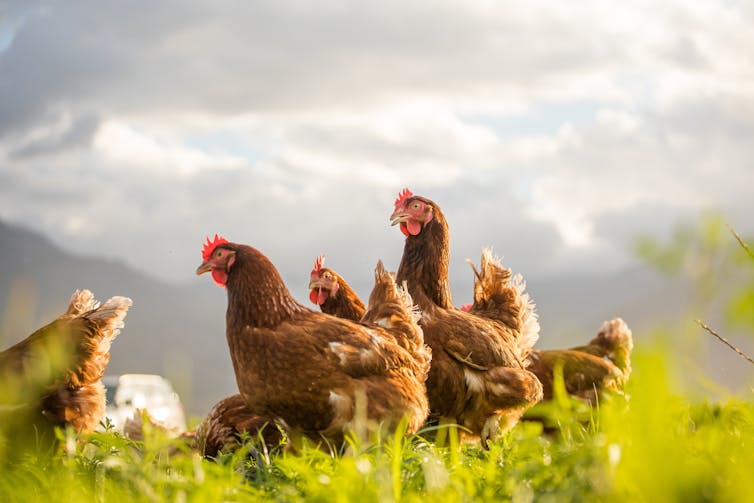Source: The Conversation – UK – By Edward Fox, Associate Professor, Department of Applied Sciences, Northumbria University, Newcastle
Nothing says summer quite like a picnic. Whether you’re lounging on a beach towel, stretched out in a park, or unpacking a hamper in your garden, picnics are a beloved way to enjoy good food in the great outdoors.
In the UK alone, the picnic food market is worth over £2 billion each year, with millions of us heading out for an alfresco feast with family or friends when the sun is shining.
But as idyllic as they may seem, picnics come with hidden risks, especially when it comes to food safety. Without access to fridges, ovens or running water, the chances of foodborne illness such as diarrhoea increase. So, how can you keep your spread both delicious and safe?
Warm, sunny weather is perfect for picnics – and unfortunately, also for bacteria. High temperatures can cause harmful microbes to multiply quickly in certain foods – especially meat, eggs, dairy or salads with creamy dressings. Add in a few flies or some dirty hands, and your picnic could become a recipe for illness.
Get your news from actual experts, straight to your inbox. Sign up to our daily newsletter to receive all The Conversation UK’s latest coverage of news and research, from politics and business to the arts and sciences.
Food poisoning bacteria can find their way into picnic food from several sources: flies that land on uncovered dishes, unwashed hands, cross-contaminated utensils, or even from leaving perishable food out in the sun too long.
This is not just a theoretical risk. There have been several well-documented outbreaks linked to picnics, including one event in Texas where more than 100 people developed diarrhoea and fever after eating food contaminated with salmonella. In another case at a church picnic in Ohio, clostridium botulinum – a bacterium that can be fatal – contaminated potato salad and led to one death.
Read more:
Salmonella cases are at ten-year high in England – here’s what you can do to keep yourself safe
Six tips to enjoy your picnic safely
However, with a few simple steps, you can protect yourself and others while enjoying that alfresco feast:
1. Keep cold food cold. If you’re bringing dishes that normally need refrigeration (think meats, cheese, egg mayo), don’t pack them until the last minute. Use a cool bag or insulated box with ice packs or frozen water bottles to help keep things chilled. Once you’re out, only take food out of the cooler when it’s time to eat, and always try to keep it in the shade.
2. Watch the clock. On hot days, perishable foods should be eaten within two hours (or four hours if it’s mild). After that, any leftovers should be thrown away. Don’t be tempted to take food home and refrigerate it “just in case” – one family in Belgium did just that with a salad, and ended up with severe food poisoning two days later.
3. Wash those hands. Picnics often mean touching tables, grass, pets or public benches – all potential sources of bacteria. Hand sanitiser is your best friend. Use it before handling or eating any food.
4. Cover up. Insects, especially flies, can carry bacteria and leave them behind when they land. Keep food in sealed containers or cover with foil or clean cloths to protect your spread. This helps keep animals (and rogue seagulls) away too.
5. Prep fresh produce properly. Salads, fruits and veg are picnic staples, but they must be washed thoroughly before being packed. Even pre-washed leaves can benefit from a rinse. Pack them in clean containers and don’t let utensils touch dirty surfaces.
Read more:
New study: Salmonella thrives in salad bags
6. Keep your utensils clean. Bring enough serving spoons, tongs and plates – and avoid putting them down on picnic tables or the ground. A spare clean plate is always a good idea when it comes to safe serving.
Enjoy the food, not the fallout
Picnics should leave you with warm memories – not stomach cramps. By following these food safety basics, you can enjoy your outdoor feast without any unwanted after-effects. From chilled pasta salads to hand-cut fruit or that classic homemade quiche, safe food is happy food.
So, pack a blanket, grab your cool bag, and soak up the sunshine – just keep the bacteria at bay.
Read more:
Food safety: are the sniff test, the five-second rule and rare burgers safe?
![]()
Edward Fox has received funding from the Food Safety Research Network.
– ref. Don’t let food poisoning crash your picnic – six tips to keep your spread safe – https://theconversation.com/dont-let-food-poisoning-crash-your-picnic-six-tips-to-keep-your-spread-safe-260834











